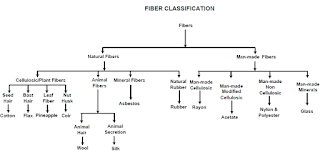Introduction Of Textile Field
This also includes fabrics made by the interlacing of yarns or threads by knitting,braindingm netting or felting. The primary natural fibers are from animal sources (wool, silk and hair), vegitable sources (cotton, flax and hemp) and less commonly, a mineral source (asbestos). The First sythetic fibers are known as regenerated fibers and were of natural origin, such as cotton or wood pulp, dissolved in a solvent and extruded as a filament. Rayon was first produced in the 1920 and is one of the important early natural based synthetics.
Fiber:

Plant-based fibers are the most common type of textile fiber beacuse plants produce more fibers than other natural sources, such as animals and minerals, Perhaps the most easily recognized source of plant fiber, cotton is used in countless clothing applications becasuse of the soft and durable natural of its fibers. Cotton is high absorbency makes it a key it a key choice for manufacturing towels, while its softness makes it preferable for use in sheets and blankets.it is extremely strong and durable, enabling cotton products to withstand wear and tear while also absorbing perspiration, However, cotton wrinkles easily, making it less desirable for certain kinds of applications.
Tree fiber, such as pulpwood, as well as cotton and hemp, are essential fibers in manufacturing paper. Plant fiber, such as grass and sisal, are key elements in making rope and twine. while plant fiber from straw and bamboo and coconuts can be found in high wear applications, such as doormats and kinds of flooring. Other plant-based fibers serve as additives in the manufacturing of textiles. Acetate, for example. is used during the fabrication of silk to increase the material’s sheen. Mineral-based textiles, such as asbestos, are commonly used in the development of panels, siding and sheets, especially in conjuction with vinyl, additionally. mental-based fibers is used to manufacture metal foil.
